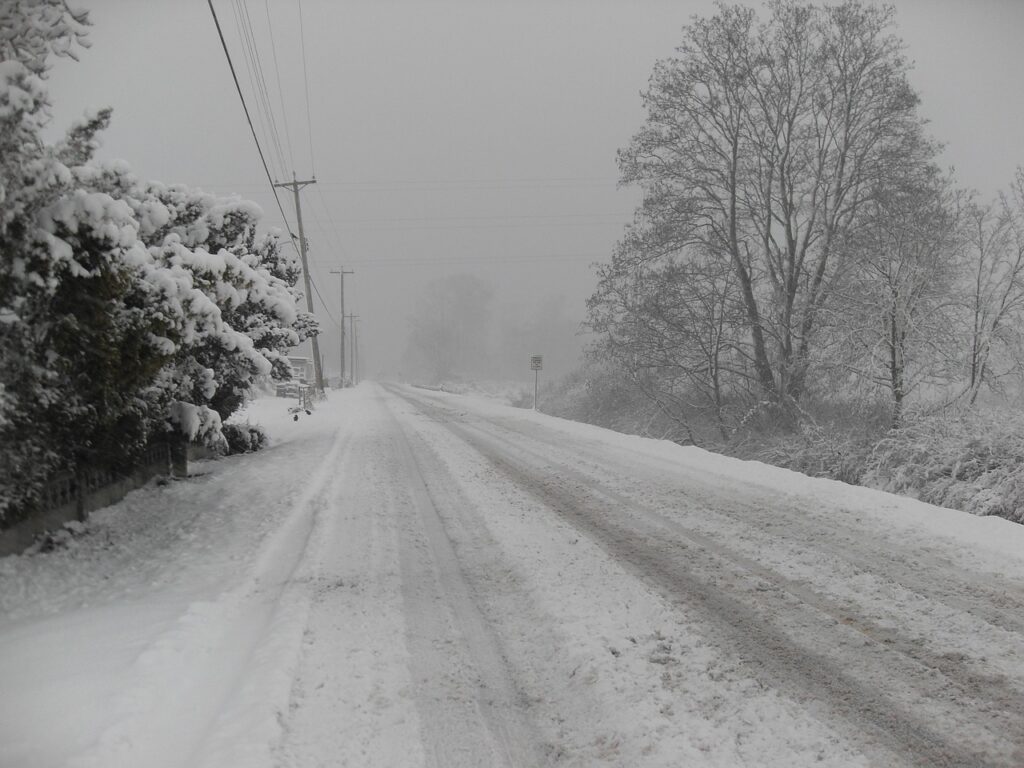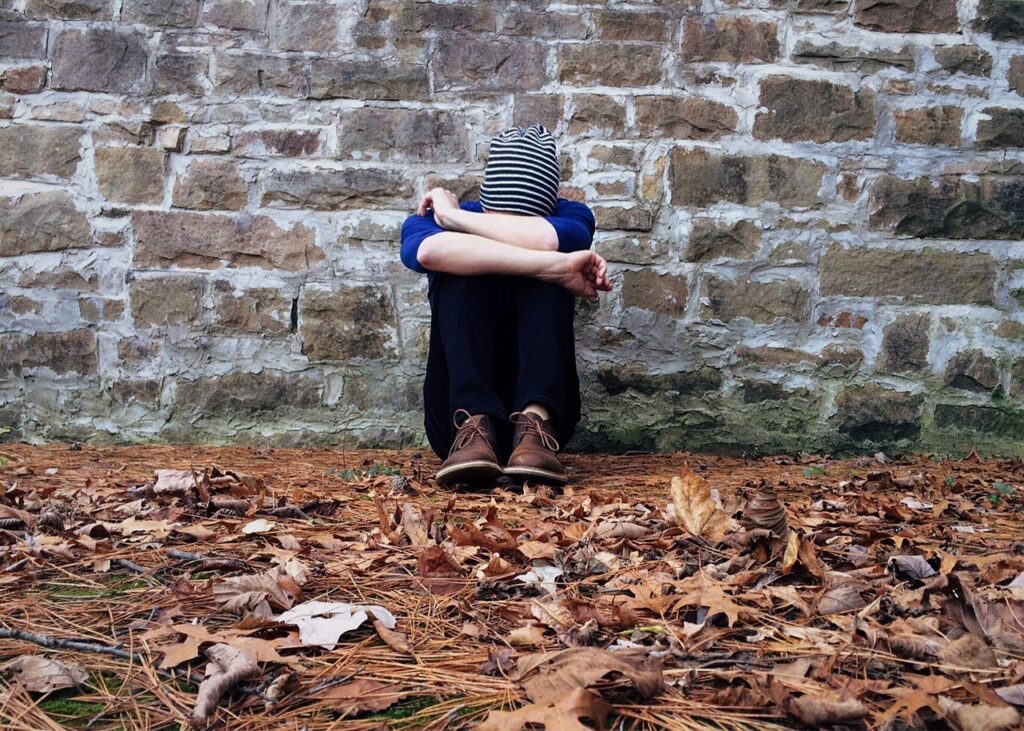The Impact of Winter Blues: Coping with Seasonal Affective Disorder (SAD)
With winter comes more dangerous weather, cold temperatures, and shorter, darker days. Living in Michigan for college, it took me a while to get used to the chilly weather, and even more time for my mental health to get anywhere decent. Still, every time winter comes around, the looming sense of darkness and hopelessness comes right back.
Seasonal Affective Disorder (SAD) is a type of depression that occurs at a specific time of the year, usually during the fall and winter months when daylight hours are shorter. It is often referred to as the “winter blues” because symptoms tend to be more prevalent and severe during this season. However, some people may experience a milder form of SAD during the spring or early summer.
The exact cause of SAD is not fully understood, but it is believed to be related to changes in light exposure and its impact on circadian rhythms and melatonin production. Reduced sunlight exposure during the fall and winter months may lead to disruptions in these biological processes, affecting mood and contributing to the development of depressive symptoms.
Addressing the impact of winter blues is crucial as it can help improve the wellness of thousands of individuals across the globe. Here are a few impactful reasons why we should be addressing SAD.
- Improved Mental Health: SAD is a form of depression, and untreated depression can have severe consequences for mental health. Addressing SAD helps alleviate symptoms such as persistent sadness, low energy, and feelings of hopelessness.
- Maintaining Relationships: SAD symptoms, such as social withdrawal and irritability, can strain interpersonal relationships. Seeking treatment can help individuals manage these symptoms, fostering healthier connections with friends and family.
- Enhanced Productivity and Functioning: SAD can impact concentration, motivation, and overall cognitive functioning. Effective treatment can help individuals regain focus and productivity in both personal and professional aspects of their lives.
- Preventing Complications: Untreated SAD may contribute to the development or exacerbation of other mental health conditions, such as anxiety or substance abuse disorders. Addressing SAD early can help prevent the escalation of these complications.
- Physical Health Benefits: SAD can be associated with changes in sleep patterns, appetite, and physical activity. Addressing these aspects through treatment can have positive effects on overall physical health.

UNDERSTANDING Seasonal Affective Disorder
While both Seasonal Affective Disorder (SAD) and the “winter blues” share some similarities in terms of experiencing mood changes during the colder and darker months, there are key differences that distinguish the two:
Severity of Symptoms:
- Winter Blues: Typically, people with the winter blues may experience mild and transient symptoms, such as a temporary decrease in energy, occasional mood fluctuations, and a slight impact on daily activities.
- SAD: In contrast, SAD involves more severe and persistent symptoms, significantly affecting a person’s daily life and functioning. Symptoms of depression, such as feelings of hopelessness, low energy, and changes in sleep and appetite, are more pronounced in individuals with SAD.
Duration of Symptoms:
- Winter Blues: The winter blues tend to be short-lived and may come and go with changes in weather and light exposure. The symptoms are often milder and don’t meet the criteria for a major depressive episode.
- SAD: SAD is characterized by more prolonged and consistent symptoms that occur seasonally, typically lasting for at least two consecutive weeks during a specific season, most commonly during fall and winter.
Impact on Functioning:
- Winter Blues: The impact of the winter blues on daily functioning is usually minimal. People may still engage in work, social activities, and other responsibilities, even if they feel a bit down.
- SAD: SAD can have a significant impact on various aspects of life, including work, relationships, and overall quality of life. It may lead to difficulties in concentrating, decreased motivation, and social withdrawal.
Intensity of Emotional Distress:
- Winter Blues: Emotional distress associated with the winter blues is generally mild, and you may still experience moments of happiness and contentment.
- SAD: Emotional distress in SAD can be more intense, resembling the symptoms of major depressive disorder. It may include persistent sadness, feelings of worthlessness, and an overall decrease in the ability to experience pleasure (anhedonia).
Need for Professional Treatment:
- Winter Blues: The winter blues often resolve on their own, and individuals may not require professional treatment. Lifestyle adjustments, such as increased exposure to natural light and self-care, may be sufficient.
- SAD: Given the severity and persistence of symptoms, people with SAD often benefit from professional intervention. Treatment options may include light therapy, psychotherapy, medications, and lifestyle modifications.
Common Symptoms of Seasonal Affective Disorder include low energy and fatigue, changes in sleep patterns such as hypersomnia or insomnia, weight gain, social withdrawal, difficulty concentrating, and feelings of hopelessness or worthlessness.

Coping strategies for seasonal affective disorder
Light Therapy
As someone struggling with depression, the lack of light during the winter has made my own mental health a lot worse. One great coping strategy is trying out light therapy. Light therapy, also known as phototherapy, involves exposure to a bright light that mimics natural sunlight. The light used in therapy is usually much brighter than indoor lighting and designed to filter out UV rays to reduce potential harm to the eyes and skin. Light therapy is thought to affect the body’s internal clock (circadian rhythms) and regulate the production of melatonin, a hormone that influences sleep patterns.
This type of therapy has shown effectiveness in reducing symptoms of Seasonal Affective Disorder (SAD) by improving mood and energy levels. We recommend using light therapy devices under the guidance of a healthcare professional to ensure safety and effectiveness.
Psychotherapy and Counseling
Cognitive-Behavioral Therapy (CBT) is a form of psychotherapy that focuses on identifying and changing negative thought patterns and behaviors. In the context of SAD, CBT helps people recognize and challenge distorted thought patterns related to seasonal changes, promoting healthier coping strategies. CBT may include goal-setting, behavioral activation, and developing skills to manage symptoms during specific seasons.
Medication Options
Selective serotonin reuptake inhibitors (SSRIs) and serotonin-norepinephrine reuptake inhibitors (SNRIs) are common classes of antidepressants used to treat SAD. I’ve been on Sertraline, which is an SSRI, for over two years, and just got off of it recently after some side effects that I didn’t like. When trying out medications, keep in mind that not every antidepressant will work for you, and be vocal when you recognize that you may not be feeling your best due to an antidepressant.
Determining the appropriate medication and dosage requires consultation with a healthcare professional. Regular monitoring and communication with a healthcare provider are essential to assess the effectiveness of the medication and address any potential side effects.
Lifestyle Modifications
For me, changing my lifestyle has been the most difficult portion of coping with my depression and anxiety. Regular exercise has been shown to have antidepressant effects and can help alleviate symptoms of SAD. Establishing a consistent exercise routine is beneficial for both physical and mental health. It can be hard to get out of bed most days, so make it a process and take it step-by-step to build a consistent routine.
Nutrient-rich diets, including fruits, vegetables, whole grains, and lean proteins, contribute to overall health and may positively influence mood as well. Limit your consumption of processed foods and sugars to help in maintaining stable energy levels.
Social support also plays a crucial role in managing SAD. Maintaining regular social connections, even in the winter months, can provide emotional support and alleviate feelings of isolation. Engaging in social activities, whether in-person or virtually, contributes to a sense of connectedness and promotes mental well-being.
Again, I personally know how hard changing your lifestyle can be. However, when you’re coping with a mental illness, this is by far the most natural and effective way to manage your mental health. It’s not going to be a one-day fix, but over time, with consistency, your lifestyle can greatly impact and improve your mental health.

Prevention and self care
Prior to entering the winter season, create a winter wellness plan, where you have a back up plan for when you’re not feeling well. Even though it’s already January, it’s never too late to create a wellness plan that includes coping strategies that you want to try out. Make sure you are being self aware and monitoring your mood changes.
The most important part of prevention and self-care is to recognize when you need help and seek it out. Going to therapy was a life-changing experience for me and getting on medications helped my mental health immensely. It might not be the final solution for you, but if you are suffering from SAD, it’s worth trying out and being open to professional help.


